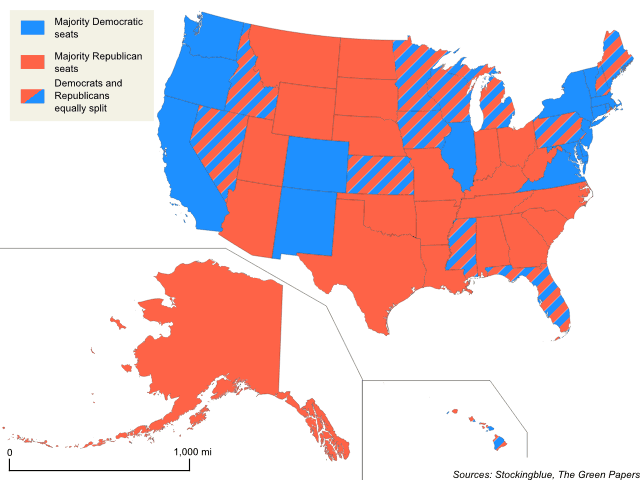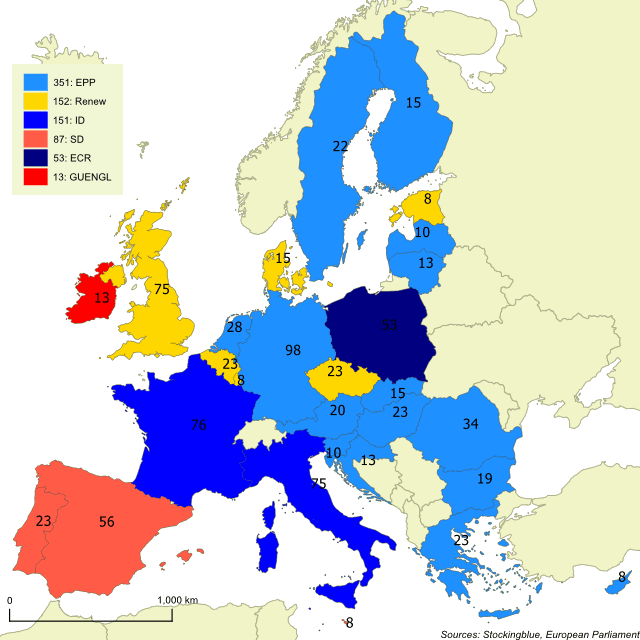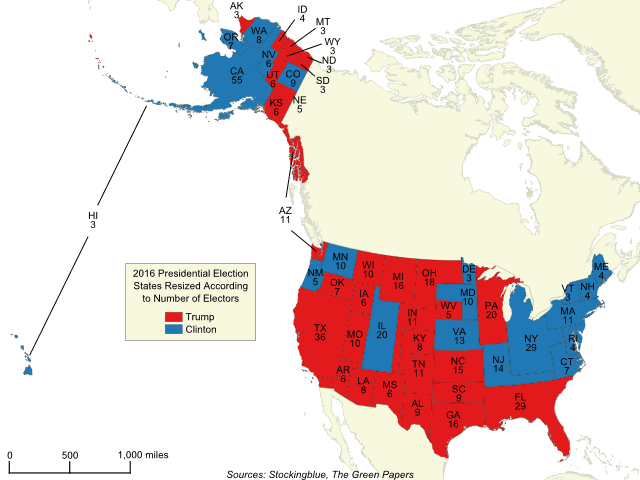US President with a Parliamentary System

Yesterday's post looked into who would win the European Commission Presidency if the EU had an electoral college. Today's post flips the script and looks at who would be President, or rather, Prime Minister if the US had a parliamentary system. The map above shows which party would have the most seats in each state with a total of 435 seats and 218 needed to win. Since so many states came so close, they split the seats between Democrats and Republicans. In addition, three other parties make it into parliament, with the Libertarians, the Greens, and Utah's independent candidate Evan McMullin also gaining seats.
EU Commission President with an Electoral College System

Recently, the European Union (EU) held an election to decide the representatives in the EU Parliament, the EU's equivalent to the House of Representatives in the US. After the election, a Commission President is selected based on the results and on input from another EU body (European Council) which consists of the heads of state of the 28 EU states. In this last election held on May 26, no party held a majority but the party with a plurality can attempt to form a coalition with other parties large enough to gain a majority. The results were so scattered however, that the three largest parties needed to form a coalition to gain a majority. Ultimately, they could not agree on a candidate to head the Commission and through backroom dealings, the European Council selected a candidate outside of the parties' leadership, and the Parliament voted her in this week. How would the election look if the EU had an electoral college? We take a look at the process below. The map above shows how many electors each party would get based on this election's results. Each state is given the number of representatives it has in the Parliament and one additional elector for each representative in the European Council and one for the Council of the European Union (so the number of parliamentarians plus two). These two bodies are not exact equivalents of our Senate, but in order to simplify the highly bureaucratic institutions of the EU, it will do for now. Another post looks at how the previous US presidential race would look with a parliamentary system.
The 2016 Presidential Election Cartogram Based on Electors

The geographically accurate cartogram above represents the 2016 presidential election with states resized according to the number of electors they have. The more electors a state has, the larger it is on the map. Compared to traditional maps, this map shows the electoral vote in a more accurate way painting the entirety of the United States with the appropriate amount of each color.